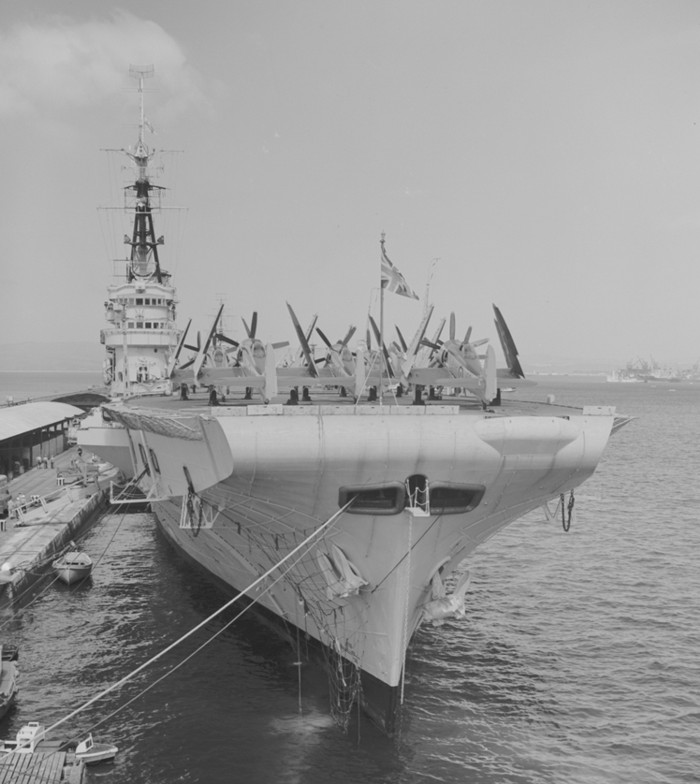
HMS Centaur (CVL-1943)
Back to Whittles Carriers Index
The Centaur class was the Royal Navies answer to the need for large numbers of aircraft carriers with decent amount of aircraft carrying capacity. Like the Albatross type before them the Centaurs were based on a mercantile type hull fitted with hangar and flight deck above. The ships being completely unarmoured except for amounts around the magazines and aviation gas storage areas.

The ships were so good that they were sold to many nations at wars end. Spain, Netherlands, Brazil, Chile, Argentina, France, India, Greece, Norway and Sweden all wanted one or more of these very handy ships. At three quarters of the size of the Illustrious type and carrying more aircraft they were easy to maintain. The Canadian Navy took over 2 of the class that were built for them.
Below: Original 1939 design to use standard piston engined aircraft. Because of the unknown variables as to whether the jet aircraft would be the stars they looked like they should be, piston engined aircraft continued to be advanced in tandem with the jets. The two hangar deck option was kept in the final design, but to make operations with jets more feasible the ship was lengthened by about 100 feet. This had the added advantage of increasing the aircraft complement from about 34-36 through to nearer 50-54. An extra squadron of jet aircraft made a large difference.

The first 6 (including the 2 for Canada) were completed with centerline lifts which turned out to be a mistake and the remainder were completed with the deck edge lifts that became synonomous with aircraft carriers operating jet aircraft. The angled deck on the first 6 was also 'narrow' and from experience with the early jet carriers the angle was increased on the remainder of the class. The two for Canada were completed to a different set of plans (See HMCS Bonaventure for details).
The final plans for the remainder of the class also had a redistribution of the twin 40mm due to where the angle deck impinges from the deck edge. This larger angle area is balanced by the bridge superstructure being mounted several feet wider than the first group.
Being completed from late 1943 onward they were not involved in the close quarters actions in the Mediterranean but did become active in the Pacific where their unarmoured hulls soon led to them being withdrawn from the front line and being used in minor roles as HMS Perseus took a Kamikaze hit that despite good fire control systems the fires caused by the hit raged out of control and the ship had to be abandoned and sunk.

| Displacement | 15,800 tons std, 23,500 tons full load | |
| Length | 749.5 ft | |
| Breadth | 88 ft hull, 110 ft over sponsons. | |
| Draught | 25 ft | |
| Machinery | 2 shaft, steam turbines, 60,000shp | |
| Speed | 28 knots | |
| Range | 12,000 miles at 14 knots | |
| Armour | 2.5" over magazines. | |
| Armament | Early
14 x 40mm (6x2 2x1) |
Late 12 x 40mm (6x2) |
| Aircraft | 54 | |
| Torpedoes | nil | |
| Complement | 1400 | |
| Notes | ||
RN Ships.
HMS Centaur, HMS Vengeance, HMS Unicorn, HMS Albion, HMS Bulwark, HMS Venerable, HMS Majestic, HMS Magnificent, HMS Pioneer, HMS Triumph, HMS Glory, HMS Ocean, HMS Thesseus, HMS Goliath, HMS Perseus, HMS Thetis, HMS Warrior, HMS Terrible.
RCN Ships.
HMCS Bonaventure, HMCS Halifax.